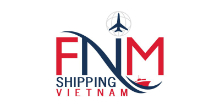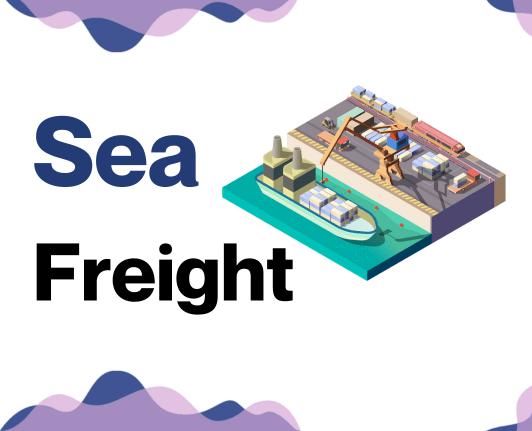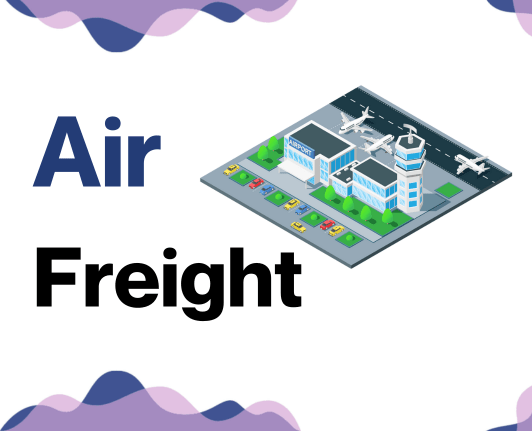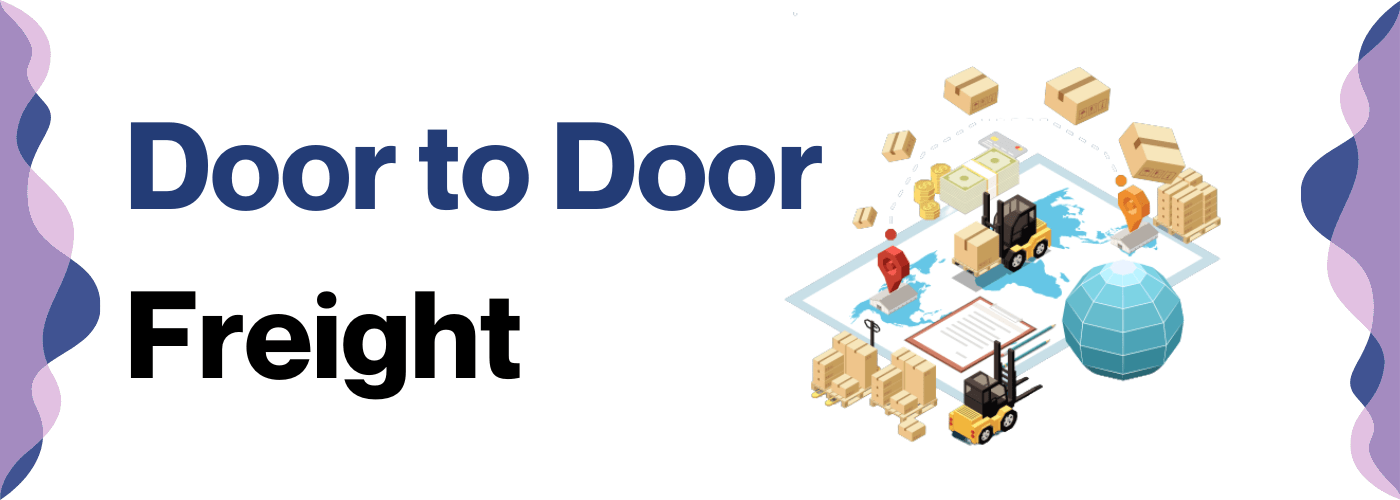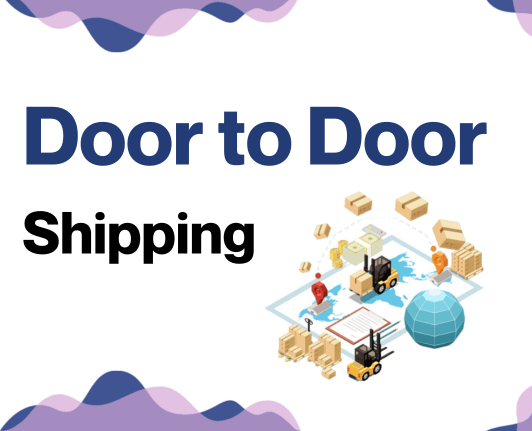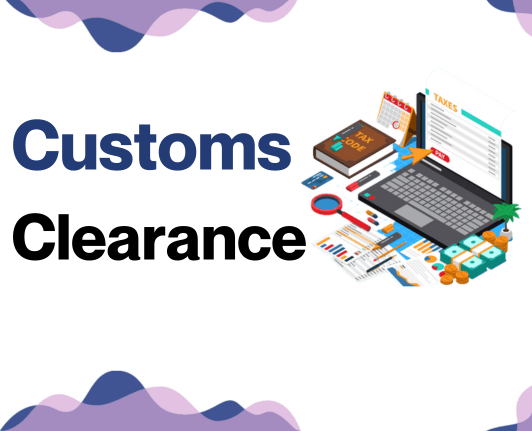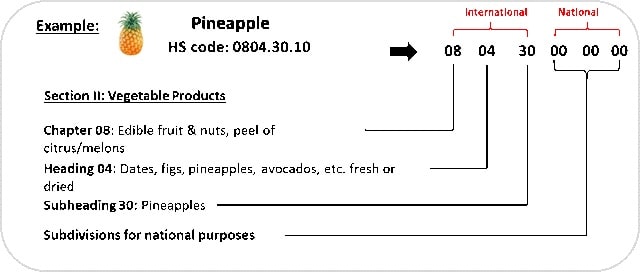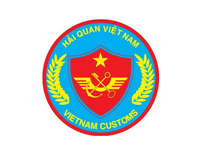Imagine shipping freight is like a bowl of Pho, at first glance, it might seem straightforward, but once you dive in, you realize there's much more to savor. Just like understanding freight rates, transit times, and customs regulations when shipping goods between Vietnam and Croatia.
In this comprehensive guide, we will help unravel the complex world of international freight. We'll delve into different types of freight options - from air to sea, road, and rail. You'll also learn about customs clearance intricacies in both countries, the nuances of duties, taxes, and receive practical advice tailored for businesses of all scales.
If the process still feels overwhelming, let FNM Vietnam handle it for you! As an international freight forwarder, we take care of every step in the shipping process, turning shipping challenges into a sequence of successful business operations.
Which are the different modes of transportation between Vietnam and Croatia?
Choosing the right transport method between Vietnam and Croatia, two nations separated by oceans and mountains, calls for a keen strategy.
Think of it like picking the best route in a giant maze: direct flights are quick, but pricey; sea routes are slower, yet cost-effective; rail and road travels face geographical hurdles. To make the right pick, one must consider their cargo type, budget, and delivery timeline.
It's like selecting the perfect tool from a toolbox: each option has its pros and cons, but the right choice will bring smooth sailing in your shipping journey.
How can FNM Vietnam help?
Sending goods between Vietnam and Croatia has never been easier. FNM Vietnam's team of experts takes care of all the complexities, from route planning to customs clearance. Why hustle when you can relax and trust the process? Drop us an inquiry today or dial up our consultants for a free, personalized quotation within 24 hours. Your shipping partner awaits.
FNM Vietnam Tip: Sea freight might be the best solution for you if:
- You're moving big loads or large items. Sea freight offers roomy, cost-effective solutions.
- Your shipment isn't time-critical. Ocean routes take longer but are often more reliable.
- Your supply chain links major ports, tapping into a broad network of sea lanes.
Sea freight between Vietnam and Croatia
Meet the open seas where dynamic trade unfolds between Vietnam and Croatia. Think of this like a bustling market, but instead of stalls, there are cargo ports like Ho Chi Minh City and Rijeka, forming lifelines of international trade.
Sea freight is your gateway to cost-efficiency, especially when shipping high-volume goods. Yet, it's not a watcher on fast-paced time.
But watch out, ocean waves aren't always calm. Businesses often grapple with the complex dance of shipping between these countries. Missteps can lead to delays, or worse, lost cargo. It’s like trying to cross a busy intersection without knowing the traffic rules - confusing, right? The good news? There are clear road maps and specifications to follow, just like traffic lights guiding you through. Dive with us as we demystify the best practices in ocean shipping between Vietnam and Croatia, riding the tides to successful trade.
Main shipping ports in Vietnam
Port of Hai Phong
Location and Volume: Located on the Cam River, near Vietnam's northern coast, Port of Hai Phong is critical for imports from Northeast Asia, with a shipping volume surpassing 8 million TEUs annually.
Key Trading Partners and Strategic Importance: Noteworthy trading partners include China, South Korea and Japan. The port serves as a major gateway, thanks to its proximity to Hanoi and the Northern key economic zone.
Context for Businesses: If you're planning to trade extensively with North Asia, especially China, the Port of Hai Phong, with its well-connected infrastructure, could be a crucial part of your logistics plan.
Port of Da Nang
Location and Volume: Positioned on the Han River on Vietnam's central coast, the Port of Da Nang's shipping volume is above 4 million TEUs regularly.
Key Trading Partners and Strategic Importance: The port primarily trades with countries in ASEAN and Northeast Asia. Da Nang holds a strategic location near the East-West Economic Corridor linking Myanmar, Thailand, Laos, and Vietnam.
Context for Businesses: For businesses aiming to tap into the ASEAN and Northeast Asian markets, the Port of Da Nang’s strategic location could be a key factor in streamlining your logistics.
Port of Ho Chi Minh City
Location and Volume: Situated in southern Vietnam along the Saigon River, the Port of Ho Chi Minh City is the country's largest port, with annual shipping volume exceeding 6 million TEUs.
Key Trading Partners and Strategic Importance: Major trading partners encompass regions like the US, Europe, and other ASEAN countries. The port is crucial for Vietnam’s integration in to the world economy due to its sizable capacity.
Context for Businesses: If you aim to ship large quantities of goods to global markets, the Port of Ho Chi Minh City's significant capacity is worth consideration in your shipping strategy.
Port of Quy Nhon
Location and Volume: The Port of Quy Nhon lies on the eastern coast of Vietnam. Serving the country's Central Highlands, it handles over a million TEUs each year.
Key Trading Partners and Strategic Importance: Key trading partners include ASEAN countries. The port's strategic significance lies in its service to landlocked regions and its connections to national highways and railways.
Context for Businesses: If you are targeting the interior regions of Vietnam or the Central Highlands, the Port of Quy Nhon can play a pivotal role in your logistics chain.
Port of Nha Trang
Location and Volume: Located in the Khanh Hoa Province, central part of the country, the Port of Nha Trang offers a moderate shipping volume with handling capacity of around 6 million tons of cargo annually.
Key Trading Partners and Strategic Importance: This port primarily trades with China, South Korea, and Japan. Its strategic importance lies in relieving pressure off the country's primary ports.
Context for Businesses: If you're looking to diversify your shipping options within the Asian market, the Port of Nha Trang can provide you with alternative routes that may help in disrupting less from unexpected port congestions.
Port of Cai Lan
Location and Volume: Positioned off the Bai Chay coast in the Quang Ninh Province, the Port of Cai Lan handles a volume of roughly 3.5 million TEUs annually.
Key Trading Partners and Strategic Importance: The bulk of its traffic comes from China, with its close proximity to Yunnan and Guangxi. It serves as a significant point of import for goods from Northern Asia.
Context for Businesses: If North Asia, particularly China, is a substantial part of your trade network, the Port of Cai Lan's close geographical advantages can help intensify your logistics efficiency.
Main shipping ports in Croatia
Port of Rijeka
Location and Volume: The Port of Rijeka is located in northern Croatia along the Adriatic Sea. It is the country's largest port, handling around 13.1 million tons of cargo and 214,348 TEUs annually.
Key Trading Partners and Strategic Importance: The port maintains strong trade relationships with central and southeastern European countries, particularly Hungary, Slovakia, Czech Republic, Serbia, and Austria. Its geographical position makes it a vital entry point for goods destined for these landlocked countries.
Context for Businesses: If you're looking to target central and southeast European markets, the Port of Rijeka could be an integral part of your logistics strategy, given its established trading routes and strong inland connections.
Port of Split
Location and Volume: Situated in the heart of the Adriatic Sea, the Port of Split is renowned for being one of the busiest passenger ports in the Mediterranean, handling more than 4 million passengers per year. While not primarily a cargo port, Split processes goods primarily from Italy and Greece, with an annual handling capacity around 2.1 million tons.
Key Trading Partners and Strategic Importance: The key trading partners for Split are primarily Mediterranean countries. It has a strategic location, making it an excellent choice for businesses shipping goods across the Adriatic Sea.
Context for Businesses: For businesses looking for passenger transport or smaller-scale goods shipping between Mediterranean countries, the Port of Split offers a strategic and bustling nexus.
Port of Ploce
Location and Volume: The Port of Ploce, located on Croatia’s Dalmatian coast, is the country's second-largest cargo port. It handles almost 4.5 million tons of cargo per year, making it a significant hub for bulk cargo.
Key Trading Partners and Strategic Importance: Main trading partners include Bosnia and Herzegovina, owing to its strategic inland connections with this country. The port also specializes in handling bulk cargo like minerals, timber and grain from across Europe.
Context for Businesses: If your business deals with the export or import of bulk goods with Bosnia and Herzegovina, the Port of Ploce is ideally situated, offering efficient cargo handling capabilities for such commodities.
Port of Zadar
Location and Volume: Found in the middle of Croatia's Adriatic coast, the Port of Zadar is not only known for passenger traffic but also for its annual cargo volume of 890,000 tons.
Key Trading Partners and Strategic Importance: The Port of Zadar has connections with many Mediterranean countries, especially Italy, and serves as a key point for the shipment of agricultural products.
Context for Businesses: Companies involved in the shipping of food and agricultural goods would find the Port of Zadar useful, given its specialist handling facilities for these types of products, and frequent passenger traffic might serve as an additional market for such goods.
Should I choose FCL or LCL when shipping between Vietnam and Croatia?
Choosing between Consolidation (LCL) or Full Container Load (FCL): your decision could dramatically reshape your Vietnam-Croatia shipping equation. The correct choice often spells the difference between a timely, cost-effective shipment and unnecessary obstacles.
We'll dive into the nuances of both, offering clarity on advantages and trade-offs. The goal? Equip you with the insights necessary to choose the right sea freight option, enhancing the success of your international trade endeavors.
Let's embark on this strategic journey, unlocking the potential of effective cargo shipping.
LCL: Less than Container Load
Definition: LCL (Less than Container Load) shipment is a transportation method wherein multiple consignors share space in one shipping container. This suits businesses shipping smaller volumes of goods.
When to Use: This option is best when your cargo is less than around 13-15 CBM. LCL provides cost-effectiveness and flexibility for businesses dealing with lower volume shipments, without the need to fill a whole container.
Example: Imagine a Ho Chi Minh City-based handicraft manufacturer needing to deliver 7 CBM of porcelain goods to a retailer in Zagreb. LCL shipping would enable them to share a container with other businesses, thus trimming down costs compared to booking a full container.
Cost Implications: Considerations include the LCL freight rate and additional charges like packing, container freight station fees, and transportation from warehouse to port. It’s generally less expensive than full container shipping for smaller volumes, but the per-CBM cost can be higher. Therefore, getting an accurate LCL shipping quote before committing is crucial. This ensures you’re aware of all potential costs associated with your LCL shipment, helping plan your logistics and budget accurately.
FCL: Full Container Load
FCL, or Full Container Load shipping, describes a situation where a single consignee books an entire container for his cargo. Commonly used dimensions include the 20'ft and 40'ft FCL containers.
With FCL shipping, the cost per unit for goods tends to be cheaper for high volumes. Since the entire container is one consignee's, there's added security as it's sealed from origin to destination, reducing the risk of damage or loss.
FCL is an ideal option when shipping larger volumes - typically more than 13, 14, or 15 cubic meters (CBM). Let's say you're a furniture manufacturer shipping a large order from Hanoi to Zagreb. FCL would be cost-effective and ensure the safety of your goods.
Cost implications involve a potentially lower rate per volume for FCL shipping compared to LCL (Less than Container Load). When the cargo volume doesn't justify the cost of an entire container, businesses might consider LCL. For FCL, you’ll typically receive a flat rate for the entire container, making it easier to get an FCL shipping quote and avoid additional fees compared to an LCL shipment. The FCL cost benefits are evident when shipping high volumes and for high-value goods where extra security is paramount.
Say goodbye to shipping headaches!
Ease business shipping between Vietnam and Croatia with FNM Vietnam, your reliable, hassle-free freight forwarding solution. Our ocean freight experts evaluate important factors such as volume, transit time, and cost to help you decide between consolidation or a full container service. Benefit from our deep understanding of international shipping and make an informed decision. Get in touch today for a free, no-obligation shipping estimate. Unleash a smooth shipping experience with FNM Vietnam.
How long does sea freight take between Vietnam and Croatia?
Sea freight between Vietnam and Croatia typically takes around 35 to 40 days on average. These transit times consider various factors, from the specific ports used in each country to the weight and nature of the goods being transported. For a precise and customized quote, it's always recommended to contact a freight forwarding specialist, such as FNM Vietnam.
To give you a clear visual, here's a representation of average shipment times between the main ports:
| Vietnamese Port | Croatian Port | Average Transit Time (days) |
| Port of Hai Phong | Port of Rijeka | 51 |
| Port of Ho Chi Minh City | Port of Rijeka | 46 |
| Port of Da Nang | Port of Rijeka | 39 |
| Port of Quy Nhon | Port of Rijeka | 51 |
*Please note that actual transit times may vary depending on a range of factors, so please contact us for tailored information.
How much does it cost to ship a container between Vietnam and Croatia?
Estimating the shipping cost between Vietnam and Croatia can be intricate, given the multiple factors in play.
Currently, ocean freight rates may range widely per cubic meter (CBM). Points of loading, destination, chosen carrier, nature of your goods, and even monthly market fluctuations all play vital roles in determining the final cost. An exact figure here would miss the full scope.
Rest assured, our shipping specialists consider your unique needs and provide custom quotes. We don't believe in one-size-fits-all; instead, we tailor our services to your specifics, ensuring the best rates every time.
Special transportation services
Out of Gauge (OOG) Container
Definition: OOG containers are designed for cargoes that don't fit in standard shipping containers due to size or shape. Handling out of gauge cargo – also known as oversized or over-dimensional cargo – requires specialized equipment and expertise.
Suitable for: Large machinery, vehicles, industrial equipment, and other oversized items.
Examples: Construction equipment like bulldozers or backhoes, large parts of wind turbines, boats.
Why it might be the best choice for you: If your business deals with merchandise that exceeds standard container dimensions, the OOG container is your go-to solution. It can handle unique shapes and sizes without confining your shipping capabilities.
Break Bulk
Definition: Refers to the method in which goods are loaded individually, in bags, boxes, crates, drums, or barrels rather than in a container. This loose cargo load is then placed directly onto the vessel.
Suitable for: Irregularly shaped or oversized items that don't necessarily require the full space of a container.
Examples: Construction materials, steel or iron beams, timber, and yachts.
Why it might be the best choice for you: If your items are too big for traditional containers but too small for charter vessels, the flexibility of break bulk shipping allows you to pay only for the space you use.
Dry Bulk
Definition: A type of sea freight suitable for homogeneous commodities shipped in large quantities like coal, grains, or minerals.
Suitable for: Loose, unpackaged, non-liquid commodities such as grain, sand, or stones.
Examples: Large-scale shipments of agricultural products, coal, or minerals for industrial use.
Why it might be the best choice for you: If your business is about large quantities of loose, non-liquid commodities, dry bulk would be the most cost-effective method.
Roll-on/Roll-off (Ro-Ro)
Definition: An efficient way to transport rolling cargo such as cars, trucks, semi-trailer trucks, trailers, and railroad cars. Items roll on to the ro-ro vessel at the origin and roll off at the destination.
Suitable for: Motor vehicles and machinery that can be driven or towed on and off the ship.
Examples: Cars, trucks, tractors, motorhomes, and other road-usable machinery.
Why it might be the best choice for you: If your cargo rolls, Ro-Ro is the optimal choice because it provides an easy, straightforward, and safe loading and unloading process.
Reefer Containers
Definition: Refrigerated containers designed to maintain the temperature of perishable goods throughout the transit. They regulate temperatures to accommodate a variety of products.
Suitable for: Fresh produce, seafood, meat, pharmaceuticals, and other temperature-sensitive items.
Examples: Shipment of tropical fruits, fresh fish, dairy products or vaccines.
Why it might be the best choice for you: If your business deals with perishable or temperature-sensitive items, then maintaining the temperature during transit is the key factor in your shipping decision. Reefer containers ensure your product's freshness upon arrival.
FNM Vietnam is at the forefront of these sea freight shipping options. We understand the intricacies involved in each method, ensuring your cargo is transported safely, efficiently, and cost-effectively. To ascertain the best shipping method for your business and to acquire a free shipping quote in less than 24 hours, please feel free to contact us.
FNM Vietnam Tip: Air freight might be the best solution for you if:
- You're on a tight schedule. Air freight delivers speed unmatched by other modes.
- Your cargo is under 2 CBM, a good fit for air's smaller capacity.
- Your destination is off the usual routes, making air's global network a key asset.
Air freight between Vietnam and Croatia
Air freight is a stellar choice if you're eyeing speedy, reliable delivery of goods between Vietnam and Croatia. For small, high-value items like electronics, jewelry, or urgent documents, it's a cost-effective ace up your sleeve. Its quick transit times and consistent schedules make it a clear winner for businesses needing nimbleness in their supply chain.
However, the sky isn't always crystal clear. Many shippers tumble into traps, costing them more than necessary. A common blunder? Not knowing how to calculate freight costs correctly. It's like buying apples and paying for the weight of watermelons! Shipping may appear simple, but miss a step, and you might feel the pinch in your wallet. This guide aims to help you avoid such pitfalls and master the art of air freight without breaking a sweat.
Air Cargo vs Express Air Freight: How should I ship?
Understanding your shipping needs from Vietnam to Croatia? Then you're at the right place! Let's break it down: air cargo utilizes regular passenger flights to haul your goods, while express air freight uses specialized cargo planes for speedier delivery.
Choosing the right option boils down to your specific business requirements, such as delivery speed, budget, and cargo size. So strap in, and let's fly into the details!
Should I choose Air Cargo between Vietnam and Croatia?
Air cargo might be your ideal shipping choice between Vietnam and Croatia, especially for loads above 100/150 kg (220/330 lbs). Major airlines like Vietnam Airlines and Croatia Airlines can help with this. Cost-effectiveness and reliability are the hallmarks of air freight although be prepared for slightly longer transit times due to fixed schedules. So, if your budget can accommodate these factors, this could be the most beneficial method for your business.
Should I choose Express Air Freight between Vietnam and Croatia?
In shipping goods between Vietnam and Croatia, consider express air freight if your cargo is under 1 CBM or weighs 100/150 kg (220/330 lbs). This dedicated service uses cargo planes, without passengers, ensuring speed and efficiency.
Trusted express couriers like FedEx, UPS, and DHL provide this service. This method suits you if you have high priority shipments and want to bypass congestions and delays common in sea freight. Ultimately, the urgency of your shipment, budget, and cargo type will dictate your choice.
Main international airports in Vietnam
Tan Son Nhat International Airport
Cargo Volume: Boasting the largest cargo handling capacity in the country, Tan Son Nhat handles over 700,000 tonnes of cargo per year.
Key Trading Partners: China, USA, Japan, and South Korea.
Strategic Importance: It's the busiest airport in Vietnam, located strategically in Ho Chi Minh City. It also serves as a major hub connecting Vietnam with the world.
Notable Features: With two runways and two terminal buildings, this airport can accommodate large volumes of cargo and multiple flights simultaneously.
For Your Business: If your business deals with bulk and high-frequency shipping, Tan Son Nhat’s capacity and flight frequency could be advantageous.
Noi Bai International Airport
Cargo Volume: Managed 708,580 tonnes of cargo in 2023, being the second-busiest cargo airport in the country.
Key Trading Partners: China, South Korea, and Japan.
Strategic Importance: Noi Bai is the biggest cargo handling airport in northern Vietnam, serving the capital Hanoi and surrounding regions.
Notable Features: It has two passenger terminals and a cargo terminal, equipped with modern cargo handling facilities.
For Your Business: If you require efficient handling of goods, especially if your supply chain involves northern Vietnam or its capital Hanoi, Noi Bai airport can be the optimal choice.
Da Nang International Airport
Cargo Volume: Handled about 100,000 metric tons of cargo per year, mainly focusing on smaller volumes of high-demand goods.
Key Trading Partners: China, South Korea, Japan, Australia, and the USA.
Strategic Importance: It’s located in central Vietnam, acting as a midpoint for transport between the northern and southern regions.
Notable Features: Da Nang Airport boasts a new cargo terminal and is committed to upgrading its cargo handling capacity.
For Your Business: If your shipping route includes central Vietnam or you prefer a centrally located point for onward distribution, the Da Nang International Airport provides a strategic point of entry.
Cần Thơ International Airport
Cargo Volume: More than 20,000 tonnes in 2023.
Key Trading Partners: China and other Southeast Asian countries.
Strategic Importance: It's an important logistic hub for Vietnam's Mekong Delta region.
Notable Features: It features a recently upgraded cargo terminal, enhancing its ability to handle larger cargo volumes.
For Your Business: If your commodities are linked to the agriculturally rich Mekong Delta region, Cần Thơ’s location and facilities could support your logistics plans.
Cam Ranh International Airport
Cargo Volume: Approximately 64,000 tonnes tons in 2023.
Key Trading Partners: Russia, South Korea, and China.
Strategic Importance: Serves as a significant logistic point in southeastern Vietnam.
Notable Features: Besides its strategic location, it has modern cargo handling facilities.
For Your Business: If your trading partners are from Russia or eastern Asian countries, Cam Ranh International Airport's regular international cargo services might benefit your supply chain.
Main international airports in Croatia
Zagreb Airport
Cargo Volume: Approximately 13,000 tons of cargo per year.
Key Trading Partners: Primarily European Union member countries, especially Germany, Italy, and France.
Strategic Importance: As the largest and busiest airport in Croatia, Zagreb Airport is the hub for international cargo operations.
Notable Features: Offers modern cargo facilities including a cargo center and warehouses handling all types of general and special cargo.
For Your Business: Being strategically located in the capital city, this airport could provide ease in access and convenience in transportation to and from your business, with its extensive global network and modern facilities.
Pula Airport
Cargo Volume: Handles approximately 1,000 tons of cargo annually.
Key Trading Partners: Primarily Italy, Germany, and the UK.
Strategic Importance: Pula Airport's geographical position makes it a favorable import/export point in the region.
Notable Features: This seasonal airport allows for increased cargo traffic during peak summer months.
For Your Business: If your trade operations are seasonal or if you deal with perishable goods, the Pula Airport can offer increased capacity during peak months.
Split Airport
Cargo Volume: Around 1,000 tons of cargo per year.
Key Trading Partners: Germany, the UK, and Austria.
Strategic Importance: Split Airport is of strategic importance due to its proximity to Split's harbor, one of the busiest ports in the Mediterranean, offering the convenience of multi-modal transport operations.
Notable Features: The airport has undergone extensive modernization and has a dedicated cargo terminal.
For Your Business: If your shipping strategy includes multi-modal transport solutions, Split Airport's proximity to a major seaport might be significant for your shipping routes.
Rijeka Airport
Cargo Volume: Approximately 500 tons annually.
Key Trading Partners: Primarily Germany, Hungary, and Italy.
Strategic Importance: Rijeka Airport's location near the seaport of Rijeka, important railways, and motorways increases its strategic value.
Notable Features: Rijeka Airport possesses a combination of road, air, sea, and rail accessibility, offering comprehensive intermodal services.
For Your Business: If your strategy involves diversification of shipping modalities, the location of Rijeka Airport can provide a unique advantage.
Dubrovnik Airport
Cargo Volume: Handles about 400 tons of cargo each year.
Key Trading Partners: Primarily the UK, France, and Italy.
Strategic Importance: Its geographical location grants it a strategic advantage in serving the Mediterranean region.
Notable Features: Despite being a smaller airport, it recently upgraded its cargo handling facilities.
For Your Business: If your business trades primarily with Mediterranean countries, deploying Dubrovnik Airport as a pivot in your shipping strategy could present a competitive edge.
How long does air freight take between Vietnam and Croatia?
Shipping goods via air freight between Vietnam and Croatia takes approximately 3-7 days on average. However, the exact transit times can fluctuate significantly.
Factors such as the exact departure and arrival airports, the weight of your shipment, and the nature of the goods being transported can all impact this duration.
For accurate, customized estimates based on your particular shipment details, we recommend consulting with a specialist freight forwarder like FNM Vietnam.
How much does it cost to ship a parcel between Vietnam and Croatia with air freight?
Shipping rates for air freight between Vietnam and Croatia vary widely, averaging around $3-$6 per kg. But remember, this is a broad ballpark.
The precise cost is influenced by many factors: your shipment's weight and dimensions, its pick-up and drop-off locations, and the nature of the goods you're shipping.
Since every shipment is unique, our team customizes each quote to offer you the most competitive rates tailored to your needs. All you need to do is reach out to us. Get your free, no-obligation quote within 24 hours today!
What is the difference between volumetric and gross weight?
The gross weight of your shipment is simply its total weight, including all packaging. On the other hand, volumetric weight, also dubbed dimensional weight, acknowledges the space that a package will take up in the cargo area relative to its weight.
To calculate the gross weight in air cargo, you straight away weigh your packaged goods and you'll have your number, typically in kilograms.
For example, a shipment of 20 boxes of shoes, each weighing 5Kg, would have a gross weight of 100Kg (or 220.5lbs).
Calculating volumetric weight requires a little more work. You'll need to measure the three dimensions of your package – height, width, and length – in centimeters, multiply them together to get the volume, then divide that by a standard divisor, which is usually 6000 for air cargo.
For example, if the boxes of shoes mentioned earlier each measure 40cm X 30cm X 50cm, then your total volumetric weight for the 20 boxes would be (40 x 30 x 50) x 20 / 6000, giving you 200Kg (or 440.9lbs)!
Express Air Freight often uses a different divisor, such as 5000. Using the same example, your volumetric weight with Express Air would be (40 x 30 x 50) x 20 / 5000 equalling 240Kg (or 529.1lbs)!
But why does all this matter? Freight charges! Carriers charge based on whichever is higher, gross or volumetric weight. This way, they make sure they're compensated for the space your shipment takes up, not just the weight. For our shoe box example, you'd be charged for a 240Kg shipment!
FNM Vietnam Tip: Door to Door might be the best solution for you if:
- You seek hassle-free shipping. Door-to-door manages the entire process for you.
- You like one go-to contact. A dedicated agent oversees your door-to-door shipment.
- You aim to limit cargo handling. Fewer transitions mean less risk of damage or loss.
Door to door between Vietnam and Croatia
Venturing into the realm of international Door-to-Door shipping, where convenience champions complexity. In simplest terms, this service transports goods directly from Vietnam to Croatia, eliminating multiple handling procedures. It's cost-effective, hassle-free, lends control over the entire process and saves valuable time. Intrigued by the promise of shipping ease? Let's dive in.
Overview – Door to Door
Need a hassle-free shipping solution between Vietnam and Croatia? 'Door to Door shipping' is your answer. Many businesses, like FNM Vietnam's clients, favor this service due to its ease and convenience.
Despite additional costs and occasional scheduling challenges, it's the antidote to logistics complexities. From pick-up to customs and delivery, all your shipping concerns are handled end-to-end.
Stay stress-free and focus on your core business while we ensure your cargo reaches its destination safely and timely. Discover the charm of worry-free shipping with our door-to-door service.
Why should I use a Door to Door service between Vietnam and Croatia?
Ever wondered if shipping logistics could be as simple as ordering Chinese takeout? Here are five crunchy reasons to consider Door to Door service for shipments between Vietnam and Croatia.
1. Stress-free Logistics: In the frenzied world of freight forwarding, Door to Door service is like your serene Zen garden. It handles everything from goods pickup to delivery, dealing with all the logistics so you don't have to. That's one less headache for you!
2. Timeliness: Urgent shipment? No problem! With Door to Door service, punctuality isn't just expected; it's the norm. Its well-oiled machinery ensures your goods arrive in the nick of time, as reliably as a Swiss watch.
3. Specialized Care: Moving complex cargo can feel like playing 4D chess. But fear not! Door to Door shines here, providing the specialized attention your goods deserve. It's like having a personal bodyguard for your cargo!
4. All-Round Convenience: Imagine not having to worry about trucking and final destination delivery. Sounds dreamy, right? Door to Door service smoothly handles these tasks so you can kick back and enjoy a cup of joe.
5. Guaranteed Outcome: The combination of stress-free logistics, timely delivery, focused care, and overall convenience gives an outcome that's as predictable as the ending of a rom-com. Timely, safe delivery - every single time!
So, whether it's watches or widgets you're shipping, Door to Door service between Vietnam and Croatia makes the perfect hassle-free shipping partner. Give it a spin and revolutionize the way you handle your international logistics!
FNM Vietnam – Door to Door specialist between Vietnam and Croatia
Welcome to stress-free shipping with FNM Vietnam - your door-to-door shipping solution from Vietnam to Croatia. Let us take care of all facets of your international shipping needs, from packing and transportation to customs and delivery, across all shipping methods.
Just sit back and relax; our experienced team led by a dedicated account executive ensures a seamless process. Contact us today for a free estimate within 24 hours or feel free to speak with our experts at your convenience. Embrace a worry-free shipping experience!
Customs clearance in Croatia for goods imported from Vietnam
Customs clearance is the process of getting goods through customs, allowing free circulation within a country. But beware, getting your goods from Vietnam into Croatia isn't a breeze! There's an intricate maze of duties, taxes, quotas, and licenses that can surprise you with unforeseen fees.
Not fully understanding this process poses real risks - your goods could be held up at customs, stalling your operations. Want to avoid these pitfalls? The upcoming content will empower you with comprehensive knowledge.
Here's a bonus: FNM Vietnam can take this cumbersome process off your plate. Just provide the origin, value, and HS Code of your goods. We'll offer an estimate, helping you to confidently budget your project. So, let's untangle this customs clearance puzzle together!
How to calculate duties & taxes when importing from Vietnam to Croatia?
Embarking on the journey of importing goods from Vietnam to Croatia, understanding how to estimate duties and taxes is indispensable. With the world of international trade often cloaked in complex jargon, let's unravel this puzzle in plain, simple words.
At the heart of custom duties calculation lies a few key elements: the country of origin, the HS (Harmonized System) code, the customs value, the applicable tariff rate, and other miscellaneous taxes or fees that your product might attract.
Now, where do we start? The first course of action is to pinpoint the country where the goods were originally manufactured or produced. This is crucial, as it's the starting point for the whole customs calculation process and sets the stage for what follows.
This might sound overwhelming initially but don't worry. As you navigate through the landscape of importing goods, it slowly starts making sense and becomes second nature to you.
Step 1 - Identify the Country of Origin
Determining the country of origin is the pillar of the import process and here's why:
1. Trade agreements: Vietnam and Croatia have specific accords that can greatly reduce the import duties. For example, the Free Trade Agreement allows select goods to enjoy lower tariffs.
2. Product restrictions: Certain commodities may face import restrictions based on their country of origin. Being aware of these rules beforehand saves unexpected trouble at customs.
3. Duty calculation: The country of origin often influences the duty rate. Accurate identification ensures you're paying the correct amount.
4. Rules of origin: Given certain goods might have components from various nations, it's crucial to establish the 'substantial transformation' occurred in Vietnam.
5. Documentation: Customs officials require proofs of origin. Your shipment may face delays without appropriate documentation.
Now, you’re in a better position to dig into the Harmonized System Code. But remember, each agreement and restriction requires distinct navigation, so take the time to comprehend these and consult with an expert if need be. After all, the best route to Croatia from Vietnam might just be paperwork away!
Step 2 - Find the HS Code of your product
The Harmonized System (HS) Code, or Harmonized Commodity Description and Coding System, is a standardized numeric method of classifying traded products. It plays a significant role in international trade by providing a tool to collect, compare and analyze commodity trading statistics.
Finding the HS code for your product can be a straight forward process.
Generally, the easiest method is to inquire directly with your supplier. They're typically well-versed in their products and inherent regulations, more often than not, they will be able to provide you with the HS code for the product in question.
But what if that's not an option? Don't worry, we will guide you through the simple steps of finding the HS Code using an HS lookup tool.
Step 1: Open up the Harmonized Tariff Schedule website.
Step 2: Enter the name of your product in the search bar.
Finally, step 3: Look at the Heading/Subheading column. That's where you will find the HS code for your product.
Please note, it's crucial to accurately identify your product's HS Code. Using the wrong code could lead to difficulties in customs, such as delays in shipments or even potential fines. Be meticulous to ensure a smooth shipping experience.
Here's an infographic showing you how to read an HS code.
Step 3 - Calculate the Customs Value
Ready to clear customs in Croatia for your goods from Vietnam? You might be confused between the value of your products and the customs value. Here's the scoop: while the value of the products is the price you paid for your goods, the customs value is a tad bit different. It's your CIF value - that's the cost of your products, plus the cost of international shipping and the insurance cost all summed up.
Say, for instance, you bought goods worth $10,000, shipping cost you $1,000, and insurance was $100. Your grand total or CIF value would be: $10,000 (price of goods) + $1,000 (freight) + $100 (insurance) = $11,100. This $11,100 is the 'customs value' that'll be considered for customs duties.
Clear as crystal? It's all part of mastering your shipments!
Step 4 - Figure out the applicable Import Tariff
An import tariff refers to the tax imposed by a country on goods brought in from abroad. It's essentially the cost of permission to cross a country's boundaries, vital for funding the government. Croatia, being part of the European Union, follows the EU's standardised classification, known as the Common Customs Tariff.
To determine the applicable tariff when importing goods from Vietnam to Croatia, use the TARIC System - European Customs. To do this, follow these steps:
1. Input the Harmonised System (HS) code that you identified earlier into the system along with Vietnam as the country of origin. For example, let's take HS code 1006.30 (semi-milled or wholly milled rice).
2. Review the displayed duties and taxes applied on your product.
Let's assume, for instance, that the tool showed a tariff rate of 5%, and your product's total CIF (Cost, Insurance, and Freight) amounted to $10,000 USD. Calculating the import duties would be as follows:
Import duties = Tariff Rate (%) CIF Cost, i.e., 5% $10,000 = $500.
So, you would expect to pay $500 in import duties for this product. This practical example can help you apply the same formula to your own products to calculate import duties. Keep in mind, though, rates may change due to different Free Trade Agreements, quotas, and import bans. The more you understand these laws, the better you'll navigate the complexities of international trade.
Step 5 - Consider other Import Duties and Taxes
In addition to regular tariffs on items imported from Vietnam into Croatia, be aware that other import duties may also apply depending on the country of origin and the product type.
For instance, excise duty could apply to specific items like alcohol. If you import wine valued at $5000, and the excise duty rate is 10%, your extra cost would be $500, independent of the standard tariff rate.
Another notable duty is the anti-dumping duty, which is levied if Croatia believes that Vietnamese exporters are selling a product at a lower price than in their home market. If the anti-dumping duty for plastic tables is 20%, a shipment valued at $2000 straight from Ho Chi Minh City would incur an additional $400 in costs.
The most significant is the VAT. Croatia has a standard VAT rate of 25%. Therefore, if you are importing ceramic vases valued at $10000, the VAT alone would be $2500. This can significantly increase your costs.
Remember, these are illustrative examples and actual rates may vary. Researching all applicable rates should be part of your logistical planning to avoid unexpected costs and delays at customs.
Step 6 - Calculate the Customs Duties
In simple terms, customs duties are a calculation made using the customs value of the goods, VAT, and any anti-dumping taxes or excise duties. But, let's break it down with some examples.
If you're shipping electronic parts worth $2000 from Vietnam to Croatia, and the customs duty is 10%, you'll pay $200 as a duty. No VAT applies on electronic parts, so your total cost is $2200.
Next scenario, your textile pieces valued at $3000 fall under a customs duty of 15% and a VAT of 25%. You'll pay $450 as a customs duty and $725 as VAT, making your total cost $4175.
In a situation where there's Excise Duty involved, let's say you're sending wine worth $5000 with a customs duty of 20%, VAT of 25%, and an Excise Duty of $1.50 per liter. If you're shipping 1000 liters, the Excise Duty amount to $1500. Add together your customs duty of $1000, VAT of $1500, and Excise Duty, your total is $9000.
Sounds complex? Well, that's where FNM comes in. As a global leader in freight forwarding, we ensure a seamless customs clearance process for you, taking care of all the calculations and making sure you don't pay a penny more. Want peace of mind on your next shipment from Vietnam to Croatia or anywhere else worldwide? Contact us for a free quote within 24 hours.
Does FNM Vietnam charge customs fees?
Although FNM Vietnam operates as a customs broker in Vietnam and Croatia, it doesn't charge customs duties. What it does charge is a customs clearance fee for handling the administrative procedures related to your shipment.
The actual customs duties and taxes applied to your goods are directly paid to the government. These costs are separate from the customs clearance fee. FNM Vietnam ensures transparency in this process, providing documents from customs officials to prove you only pay the government-set charges.
Understanding this difference is crucial to managing your shipment expenses more effectively.
Contact Details for Customs Authorities
Vietnam Customs
Official name: General Department of Vietnam Customs
Official Website: https://www.customs.gov.vn/
Croatia Customs
Official name: Customs Administration of the Republic of Croatia
Official website: https://carina.gov.hr/en
Required documents for customs clearance
Grasping complex customs paperwork can make anyone's head spin, yet it's critical for smooth international trading. We'll deep-dive into essential documents like the Bill of Lading, Packing List, and others—an effective antidote to your import-export headaches. Let's crack the code together.
Bill of Lading
Ever shipped a package from Vietnam to Croatia and found yourself tangled up in paperwork? The Bill of Lading (B/L) will be your key to untangling that knot.
This official document indicates the transfer of ownership from the seller to the buyer, making it a crucial piece of validity in your shipping process. With the advent of technology comes the boon of electronic, or 'telex,' releases which simplify operations by eliminating the need for a physical B/L.
Opting for an air cargo instead? You'll be dealing with an Air Waybill (AWB), the air counterpart to the B/L. Take note that having your documents prepped and ready can mean the difference between a smooth transition and a logistical nightmare. Always remember, sailing through customs requires your B/L at the helm.
Packing List
When you're shipping goods from Vietnam to Croatia, the Packing List is your best friend. This essential document details what's in your shipment and is a must-have for both sea and air freights.
Think of it as a detailed index of your consignment. Got an array of Vietnamese silk outfits flying to Zagreb? Your Packing List should note every thread. It's your responsibility, as a shipper, to ensure every item is accounted for, and the list is error-free.
A single mistake could lead to a pesky, costly delay at the Croatian customs. Let's avoid that! Hence, keep it accurate, keep it precise. The more detailed your Packing List, the smoother your cargo sails (or flies).
Commercial Invoice
Delving into the intricacies of your Commercial Invoice, it's the heartbeat of your shipping documentation when sending goods from Vietnam to Croatia.
This all-encompassing document should record in detail the specifics about the goods, from their description, quantity, to the buyer's and seller's information. The omnipotent eyes of customs officers inspect this for tax and duty calculations, hence alignment with other shipping documents is a do-or-die.
Picture this: An unfortunate typo sees a stack of shipment labeled as ceramic vases on your Invoice, yet the Packing List reads glass sculptures. Cross-checking, double-checking, and triple-checking to ensure seamless consistency can save you both time and stress.
Remember, the smoother the customs process, the faster you overcome obstacles and keep that supply chain moving.
Certificate of Origin
Understanding your Certificate of Origin (CO) is vital when shipping goods between Vietnam and Croatia. Basically, this document proves where your cargo was made and can unlock preferential duty rates, helping you save money.
Let's say you're shipping automotive components manufactured in Hanoi. When you reach Croatian customs, a correctly filled CO can make the difference between paying a full tariff or a reduced one.
So, remember to clearly identify Vietnam as the country of manufacture on your CO – your budget might thank you! As mundane as it may seem, this piece of paper can seriously streamline your European market expansion.
Certificate of Conformity (CE standard)
If you're shipping goods from Vietnam to Croatia, getting a Certificate of Conformity (CE standard) is a critical step for customs clearance. This certificate affirms that your goods meet the necessary safety and environmental standards specified by the European market.
It's different from quality assurance, which broadly verifies product quality and consistency. For example, a CE standard for electronics may check for safety against electrical shocks, while a quality assurance test would verify its functioning as stated.
In the US context, this could be compared to the FCC standard for electronic goods. The actionable step here is to identify the specific standards applicable to your product category and get it tested and certified before shipping. Ensuring these certifications can save your business from unnecessary delays and costs at the Croatian customs.
Your EORI number (Economic Operator Registration Identification)
Ensuring a smooth shipping process between Vietnam and Croatia requires an EORI Number, a unique identification tag needed by anyone engaging in import and export within the EU.
Think of it like a passport for your goods; it helps authorities track and record transactions. No EORI could leave your shipment stranded at the border, so it's crucial for your business. To obtain it, you'll register through your national customs website, ensuring the logistics flow without hitches.
So, gear up and let your business conquer new horizons with the elixir of seamless shipping - the EORI Number.
Get Started with FNM Vietnam
Navigating Vietnam-Croatia customs clearance can be confusing and time-consuming. Why not let FNM Vietnam take care of it? Our experts handle all regulatory aspects, saving you time and avoiding potential fines. With our comprehensive services, shipping has never been easier. Don't let customs obstacles slow down your business. Contact us for a free quote, and get a response in less than 24 hours!
Prohibited and Restricted items when importing into Croatia
When importing goods into Croatia, it's crucial to know the items that are prohibited and those with restrictions. It can be tough to understand these complexities and the risk of running into legal issues could cost your business. Let's clarify this process for you right away.
Restricted Products
1. Pharmaceuticals: You'll need a permit from the Agency for Medicinal Products and Medical Devices of Croatia (HALMED).
2. Pesticides and related products: You must secure authorization issued by the Ministry of Agriculture.
3. Precursor chemicals: Stay compliant by obtaining a license from the Ministry of Health.
4. Weapons and ammunition: You will require a permit from the Ministry of the Interior .
5. Plants, seeds, and plant products: You should apply for a phyto-sanitary certificate from the Ministry of Agriculture.
6. Live animals and animal products: Make sure to apply for a veterinary certificate from the Ministry of Agriculture.
7. Cultural goods: All items considered cultural heritage require a permit issued by the Ministry of Culture and Media.
8. Radioactive material: If you're shipping these, you'll need approval from the State Office for Radiological and Nuclear Safety.
9. Food and drinks (including alcohol and tobacco): Get your food and beverage import licenses from the Ministry of Agriculture.
10. Endangered species (Flora and Fauna): If you're trading in endangered species, you'll require a CITES permit from the Ministry of Environment and Energy.
Remember, this list is a starting point and won't cover all possibilities. Always verify with local regulations and appropriate bodies before shipping!
Prohibited products
- Narcotics and illegal drugs
- All forms of asbestos
- Goods originating from embargoed countries
- Counterfeit money and goods
- Pornographic materials
- Flick and gravity knives
- Endangered plant and animal species, including derivatives
- Radioactive materials
- Materials that could harm public health, wildlife, and the environment
- Cultural artefacts without a special permit
- Arms and ammunition without necessary permits
- Human remains or human body parts.
Are there any trade agreements between Vietnam and Croatia
Yes, there are trading arrangements between Vietnam and Croatia, but they mainly fall under the blanket of the EU-Vietnam Free Trade Agreement (EVFTA). This FTA eliminates up to 99% of customs duties on goods traded between Vietnam and EU member states, including Croatia.
However, gradual reductions apply, so ensure to understand the current duty rates. Also, infrastructure developments, like the planned North-South Expressway in Vietnam, may provide logistic benefits in the future.
Always stay up-to-date with these opportunities to maximize your business potential while navigating cross-border shipments.
Vietnam - Croatia trade and economic relationship
Vietnam maintains a robust trading relationship with Croatia, rooted in friendship and cooperation dating back to 1994. Nurturing excellent economic ties, Vietnam has targeted the European Union (EU), particularly Croatia, for investment and imports.
In 2022, the trade turnover held impressive numbers, registering $112.1 million. Notable sectors include garments, footwear, tropical and sub-tropical vegetables. The striking rapport saw an estimated $14.3 million Vietnamese investment in Croatia as of 2022.
Historical milestones such as the EU-Vietnam Free Trade Agreement (EVFTA) have further bolstered this relationship, opening up new horizons for trade collaboration. With Croatia being part of the EU, the EVFTA is an advantageous means for Vietnamese goods to penetrate the Croatian market effectively. As we continue living through this globalised era, the Vietnam-Croatia trade relationship is poised for substantial growth and diversification.
Your Next Step with FNM Vietnam
Facing challenges while managing your shipments between Vietnam and Croatia? With FNM Vietnam's tailored services, transform these roadblocks into smooth sailings. Our experts handle everything - whether it's organizing transport or deciphering complex customs procedures. Don't let logistics get in the way of business growth. Reach out to us now. Let's get ahead together!
Additional logistics services
Experience effortless logistics management with FNM Vietnam, your one-stop solution for all supply chain needs, from shipping to final doorstep delivery, and everything in-between. We make global trade easy!
Warehousing and storage
Choosing the right warehousing in Vietnam-Croatia routes can be tricky, especially when your goods need special conditions like temperature control. Missteps here can affect the quality of your shipment. Good news – we've got your storage needs covered with reliability and the right conditions. Curious to learn more? Jump over to our dedicated page on Warehousing for deep insights.
Packaging and repackaging
Proper packaging and repackaging is crucial when shipping goods from Vietnam to Croatia. Why? It safeguards your goods from damage during transit, and can even influence customs clearance. Need an experienced hand? Trustworthy agents, like us, know how to prepare different products - from pottery to apparel. Wondering about fragile shipments or special care items? We've got that covered too! More on this craft, on our dedicated page: Freight Packaging.
Cargo insurance
When moving goods, things don't always go as planned. Step in, Cargo Insurance. Unlike fire insurance, this covers you from potential transportation mishaps or accidents that could derail your shipment loaded with valuable items. Remember that time when a storm hit and containers were lost at sea? Cargo Insurance would've been a godsend then. Don't leave it to chance; instead, bank on prevention. Want to learn more about it? Get all the nitty-gritty details on our dedicated page: Cargo Insurance.
Supplier Management (Sourcing)
Struggling to source goods from East Europe or Asia including Vietnam? FNM Vietnam steps in as your pro navigator, uncovering reliable suppliers and managing the complete procurement process. We crack language barriers and guide you around logistical hurdles – like a local manufacturing hunt turned stress-free spree. Curious for more insights? Visit our dedicated page: Sourcing services.
Personal effects shipping
When relocating your life from Vietnam to Croatia, every sentimental trinket and hefty furniture piece matters. Our Personal Effects Shipping service ensures your belongings reach safely irrespective of their weight or delicacy. Recall the relief you'd feel when grandma's heirloom vase or your designer furniture lands intact. More info on our dedicated page: Shipping Personal Belongings
Quality Control
When shipping from Vietnam to Croatia, quality checks can make or break your shipment. Our team scrutinizes every product right from the manufacturing or customization stage. This rigorous process ensures no unpleasant surprises like faulty goods or customs snags. Remember the case of a client whose 500-unit shipment was saved from potential product recall – all thanks to our inspectors who identified a minor defect during the batch inspection. More info on our dedicated page: Quality Inspection
Product compliance services
Ensuring product compliance is indispensable in global trade. Our compliance service helps you meet varying regulations by subjecting your goods to rigorous testing in our laboratory. This way, we ensure your product aligns with the destination's laws and earns the requisite certifications, avoiding costly market entry snags. Consider it as your 'passport' in bringing goods across borders seamlessly and confidently.
FAQ | Freight forwarder in Vietnam and Croatia
What is the necessary paperwork during shipping between Vietnam and Croatia?
When shipping goods from Vietnam to Croatia, different types of paperwork are needed. The bill of lading for sea shipments or air waybill for air shipments is key, but rest easy. At FNM Vietnam, we take care of these details for you. However, we do need you to provide us with a packing list and a commercial invoice. Please note that depending on the nature of your goods, other documentation such as Material Safety Data Sheet (MSDS) or various certifications may be required. But don't worry, we’ll guide you through the whole process!
Do I need a customs broker while importing in Croatia?
When importing goods into Croatia, it's highly advisable to engage a customs broker due to the intricate process and variety of compulsory documents involved. Here at FNM Vietnam, we expertly manage the complexity on your behalf. Our seasoned professionals will represent your cargo at customs, ensuring all requirements are adeptly handled. Thus, by partnering with us, you're effectively securing a smoother, trouble-free journey for your shipments.
Can air freight be cheaper than sea freight between Vietnam and Croatia?
While the cost of shipping can vary based on factors such as route, weight, and volume, typically, air freight might be cheaper than sea freight for shipments less than 1.5 Cubic Meters or 300 kg (660 lbs). This is merely a guideline and the specifics can change depending on the situation. At FNM Vietnam, we tailor our services to your needs, ensuring you receive the best price possible. We'll stay on top of all these nuances for you, so you don't have to. Our dedicated account executives are ready to help you make the right choice.
Do I need to pay insurance while importing my goods to Croatia?
While insurance isn't obligatory for importing goods to Croatia, at FNM Vietnam, we strongly advise getting it. Offering protection against a range of incidents that could result in damage, loss, or theft, insurance provides peace of mind. There are inherent risks in both local and international shipping, and insurance eases these uncertainties. It plays a pivotal role in safeguarding your investment, ensuring that unforeseen complications don't turn into costly business interruptions. Our role as your freight forwarder is to help you navigate these complexities and mitigate risks, ensuring a smooth shipping experience.
What is the cheapest way to ship to Croatia from Vietnam?
Given the significant geographical distance between Vietnam and Croatia, sea freight is often the most cost-effective option. It's worth noting that while it can be slower than air freight, the cost savings are substantial, particularly for heavier or bulk items. As FNM Vietnam, we provide comprehensive sea freight services, including managing all customs and administrative procedures, to ensure your goods arrive safely and on time.
EXW, FOB, or CIF?
Choosing between EXW, FOB, or CIF largely hinges on your relationship with your supplier. Remember, your supplier may not be a logistics professional, hence letting us, at FNM Vietnam, manage the process could be beneficial. Typically, suppliers sell under EXW (at their factory door) or FOB (inclusive of all local charges till the origin terminal). Regardless, we offer a door-to-door service handling international freight and destination procedures, simplifying the process for you.
Goods have arrived at my port in Croatia, how do I get them delivered to the final destination?
If your goods have arrived in Croatia under CIF/CFR incoterms, securing a customs broker or freight forwarder is necessary to clear your items at the terminal and manage import charges and delivery. Alternatively, consider employing our FNM Vietnam team to conduct a DAP incoterms service. This includes complete handling to your final destination. To clear any doubts, reach out to your dedicated account executive directly.
Does your quotation include all cost?
Absolutely, when you receive a quotation from us at FNM Vietnam, it encompasses all charges except for duties and taxes at the destination. To avoid any unexpected costs, you can request an estimate of these charges from your dedicated account executive. We take pride in maintaining a clear and transparent fee structure with no hidden charges.
